
The Real Problem is the Malaria
It starts with a mosquito bite. Then there’s an itch. And for us, it’s just an annoyance. But for children in poverty, the bite is just the beginning, and the itch isn’t the problem. The real problem is the malaria.
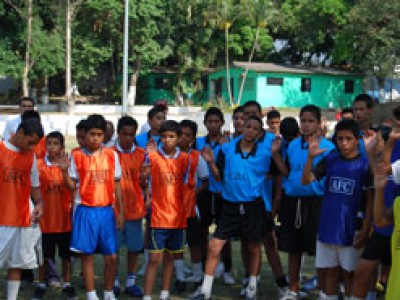
The Next World Cup All Star?
The eyes of hundreds of thousands of people are glued to the field. A commentator narrates the last seconds of the game: “… and there comes Landaverde with a pass from Valdez… Landaverde surpasses the defense quite easily; he aims at the goal… shoots… AND SCORES!!!” El Salvador wins. The people in the stadium shout and celebrate; the national team has won the World Cup.
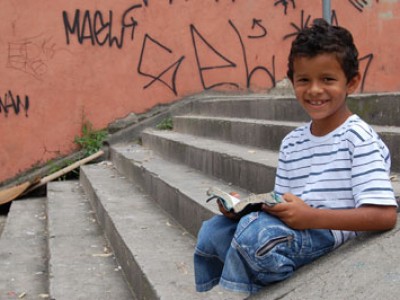
How Do We Introduce Children in Poverty to a Christian Education?
Many children enrolled at the child development center got their first contact with the Word of God at the center. They had never heard about God, Christ or stories such as the Garden of Eden, Noah’s Ark or Joseph in Egypt.
Transformation is the best word to define what happens with the children during the class. Parents recognize the difference in the way their children behave.
The History of Our AIDS Initiative
The Compassion AIDS Initiative has been around for five years. Yep, it’s our fifth anniversary this year!
And in those five years, we have made some incredible strides, taken some risks, and as a result have sustained the lives of more than 20,000 of our beneficiaries, caregivers and siblings.
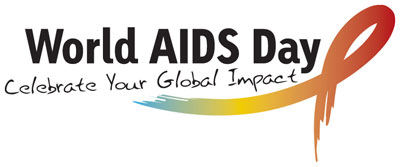
We began the AIDS Initiative because of an increasing awareness of the impact of HIV and AIDS, specifically in Africa. The virus had already done plenty of damage, and as our programs in Africa grew stronger, we were ready to embark on a new challenge — one that would have an enduring impact, give hope and save countless lives.
As Christians, we felt we had a mandate to do something more to impact the kingdom.
When we first began, the scientific community was still skeptical that Africans with AIDS could take the medicine that would keep them alive. While the sense of urgency was growing, commitments to fund the provision of antiretroviral therapy (ART) were not. (more…)
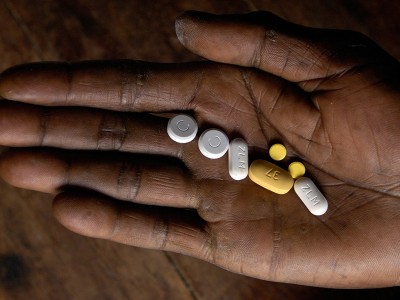
The Last Mile: How Our AIDS Initiative Works
In the global fight against AIDS, the international community has brought access to lifesaving antiretroviral therapy (ART) to many health facilities around the world, but not all. Those lifesaving tablets that travel 10,000 miles sometimes don’t make it far enough.
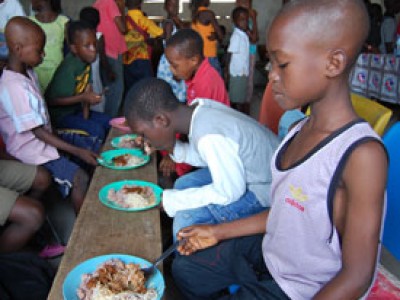
Highly Vulnerable Children: How Do We Help Them?
Our Highly Vulnerable Children initiative deals with poor children who find themselves in very critical conditions demanding special attention and assistance in order to survive.
HIV and AIDS in Uganda
Uganda is often held up as a model for Africa in the fight against HIV and AIDS. Strong government leadership, broad-based partnerships and effective public education campaigns all contributed to a decline in the number of people living with HIV and AIDS in the 1990s.
Despite this impressive reduction in the spread of AIDS in Uganda (from 30 percent in the 1980s to 6.5 percent to date), AIDS is still infecting and killing many Ugandans. Uganda’s HIV prevalence rate has stagnated over the past four years, meaning that the country is not managing to reduce the number of new HIV infections.
Damalie Andabati, the health specialist in our Uganda Country Office, says,
“Currently 6.3 percent of Uganda’s population is infected with HIV, and a new issue that has been discovered by the Uganda Virus Research Institute is that 66 percent of the new infections are among married couples.”
The reason for the high percentage in this unexpected group is not yet certain.
It is feared that HIV prevalence in Uganda may be rising again. It has been suggested that antiretroviral drugs have changed the perception of AIDS from a death sentence to a treatable disease. This perception may have reduced the fear surrounding HIV.
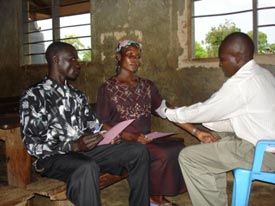 As part of our holistic outcomes around health, voluntary counseling and testing (VCT) for HIV is part of the regular health screenings conducted for the parents and children at the child development centers.
As part of our holistic outcomes around health, voluntary counseling and testing (VCT) for HIV is part of the regular health screenings conducted for the parents and children at the child development centers.
Kansanga Child Development Center carried out a VCT session back in March and 233 caregivers and children were tested, which is one of the best success stories of beneficiaries being tested for HIV by Compassion Uganda.
Kansanga, a red-light district of Kampala, is a community in the slum areas, and the child development center is located one kilometer away. Much effort has been put in clearing this district of prostitution and raising awareness about preventing HIV. Many fear being seen going for the test or seeing the results they will receive from the test.
More than 60 percent of Uganda’s population is illiterate and ignorant, and others are even too poor to own radios from which they would hear information on where to go for testing. Our church partner staff, and government officials, are hopeful for the future — that with tireless effort in community training and sensitization this figure will be adjusted.
Help support Compassion’s AIDS Initiative today.
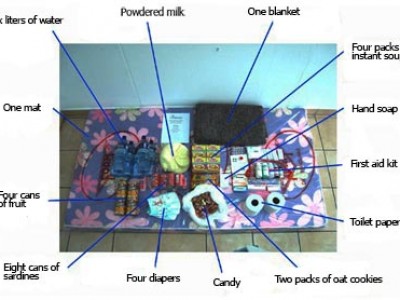
Disaster Relief Kit: What’s Inside?
After a disaster occurs in one of our countries, we often raise money to help those affected. We do this to help provide things such as food and water, shelter, bedding, trauma counseling or medical treatment, among other needs. Many times we also send disaster relief kits.
Alexander Needs Heart Surgery
Have you ever heard of Atrial Septal Defect (ASD)? Apparently, it’s a congenital heart defect.
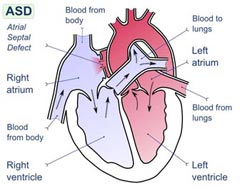 If you have a defect in your interatrial septum, the tissue that divides the right side of your heart from the left side, your blood can get confused. And if that happens, you end up with blood that goes where it shouldn’t. That’s bad.
If you have a defect in your interatrial septum, the tissue that divides the right side of your heart from the left side, your blood can get confused. And if that happens, you end up with blood that goes where it shouldn’t. That’s bad.
In a normal heart, the left ventricle has to produce enough pressure to pump blood throughout the entire body, but the right ventricle has to produce only enough pressure to pump blood to the lungs.
In the case of a large defect, this pressure difference means that blood from the left atrium can flood and enlarge the right side of the heart and, if left untreated, can result in heart failure.
That’s ASD in a nutshell. And this is why I tell you.
 Alexander is an 8-year-old Kenyan boy who has ASD. He is in the third grade and is the youngest child in a family of five. Because his heart has been pumping deoxygenated blood to his growing body for his entire life, Alexander is smaller than most children his age.
Alexander is an 8-year-old Kenyan boy who has ASD. He is in the third grade and is the youngest child in a family of five. Because his heart has been pumping deoxygenated blood to his growing body for his entire life, Alexander is smaller than most children his age.
In August 2008, during an evaluation at the child development center, a pediatrician noticed that Alexander has a heart murmur. Follow-up tests in Nairobi identified the birth defect and recommended a cardiac catheterization procedure and open heart surgery.
But Alexander’s parents are peasant farmers, and his mother sells fruit at the market to earn extra income. They survive on $13.70 per month.
$13.70 a month is barely adequate to meet the family’s basic needs, let alone pay for open heart surgery.
At this point, heart failure is a real possibility for Alexander. However, studies have shown that patients with a surgically repaired ASD have an excellent prognosis, particularly when the operation is done before the age of 25.
But Alexander’s family can’t afford the operation. It costs $8,303.
Alexander has been waiting to receive the surgery for several months now, since early December, but he can’t wait any longer. His condition has recently worsened – which made me think of something Amanda suggested back in February.
“I am just kicking around a few ideas here. What if Compassion had a “Spotlight of the Week” – or “Spotlight of the Month?” It could be either a child (medical need?), family, or small community need. It could even be in the area of the global financial crisis, disaster relief, Child Survival Program, or some other facet of Compassion. For example, one week you could highlight the (global food crisis) need of a community in Uganda to have goats or seeds for crops (or both). After the donations have been given, you could easily follow up with a story in the blog to share the results of the giving.”
So, Alexander has a need. And our objective is to give him a normal heart. Can we do this for him?
Make a donation to help pay for Alexander’s surgery. (Update: May 21, 2009 – You did it! And more. You contributed around $10,000. I expect to have the exact amount tomorrow.)
Thank you for loving this child.
As I receive updates on how Alexander is doing, I will share them with you. I can’t promise you updates with any degree of regularity though. I can just promise that there will be a follow-up.
This Man Has AIDS
On a recent trip to Africa, I met a man. A man named “John” who is living positively with HIV and even AIDS.
Seeds for the Harvest
The green leaves start to receive the first rays of the sun, leaving the darkness and cold of the night behind. It is 6 in the morning and the harvest looks ready – ready to be separated from the corn bush, ready to become part of a meal, and ready to be part of a change in the lives of an entire community.
This is the fruit of seeds planted with hope, watered with hard work and dreams, and, at last, harvested with joy.
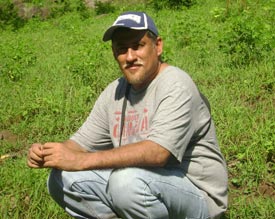 Pastor Damian checks two sacks full of beans. It is just the beginning of the harvest and the fruits already look promising.
Pastor Damian checks two sacks full of beans. It is just the beginning of the harvest and the fruits already look promising.
Another man, Brother Juan, a seasoned farmer with dark skin and gray hair, is a perfect example of a Salvadoran farmer – thin but somehow robust, quiet and wise. Juan has served as an adviser to Pastor Damian since they decided to implement program “Double Seed.”
Juan talks about the beans and how they should keep some leaves and dirt in the sack so the beans will not lose the humidity they need.
“This way, they can last for about a year,” he adds, and smiles, knowing that the efforts made these past three months have given results – promising results that translate into hope.
It has been three months since Double Seed started in the community of Corinto, in Zaragoza, a city located eight miles south of the capital city, San Salvador, in El Salvador.
These past months meant sweat and great efforts for the people, but it also meant hope for a future that did not seem so clear a few months before. (more…)
Malaria in Africa: Nana’s Story
The sun was at its zenith on that Thursday I visited. Nana had been at the center since the morning. After the holistic child development program, it was now lunchtime. Many children who were not part of the development center gathered round the church’s courtyard, staring at the registered children enjoying their meals.
Every Thursday there are two groups of children that meet at the development center: registered children and those waiting to be registered. It was such a privilege for Nana to be registered.
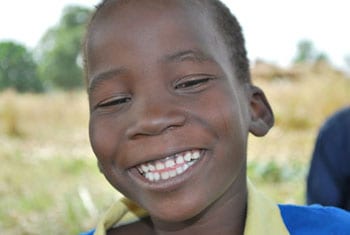
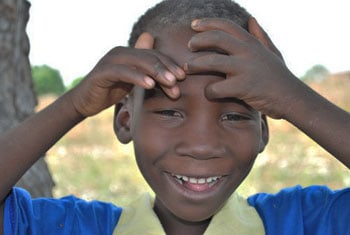
After lunch, Tou-Wend-Sida, the team leader, took Nana home. The boy’s left foot was wounded and he could not walk home from the student center. When the team leader and Nana reached home, the boy’s father was sitting in the shadow of one of the two huts that compose the household.
He was resting after working the whole morning to put harvest in a safe place in their loft made of high grass. A smile of complete satisfaction could be seen on his face. The rainy season had been satisfactory, and the harvest was better than in the previous year.
“Hopefully, there is going to be enough food this year after a time of severe food crisis that turned so many lives into hell on earth,” the boy’s father seemed to say to himself, while staring at the loft.
The boy’s mother and sisters were nearby, making brooms out of grass plucked in the field that they will use to sweep the courtyard and the huts.
Some months ago, Nana’s family was going through hard times. Nana was sick from malaria. The family might not have not noticed that the child was sick except for a fortunate accident. Nana was riding a bicycle with his older brother when his left foot got trapped in the rear wheel’s spokes. (more…)


